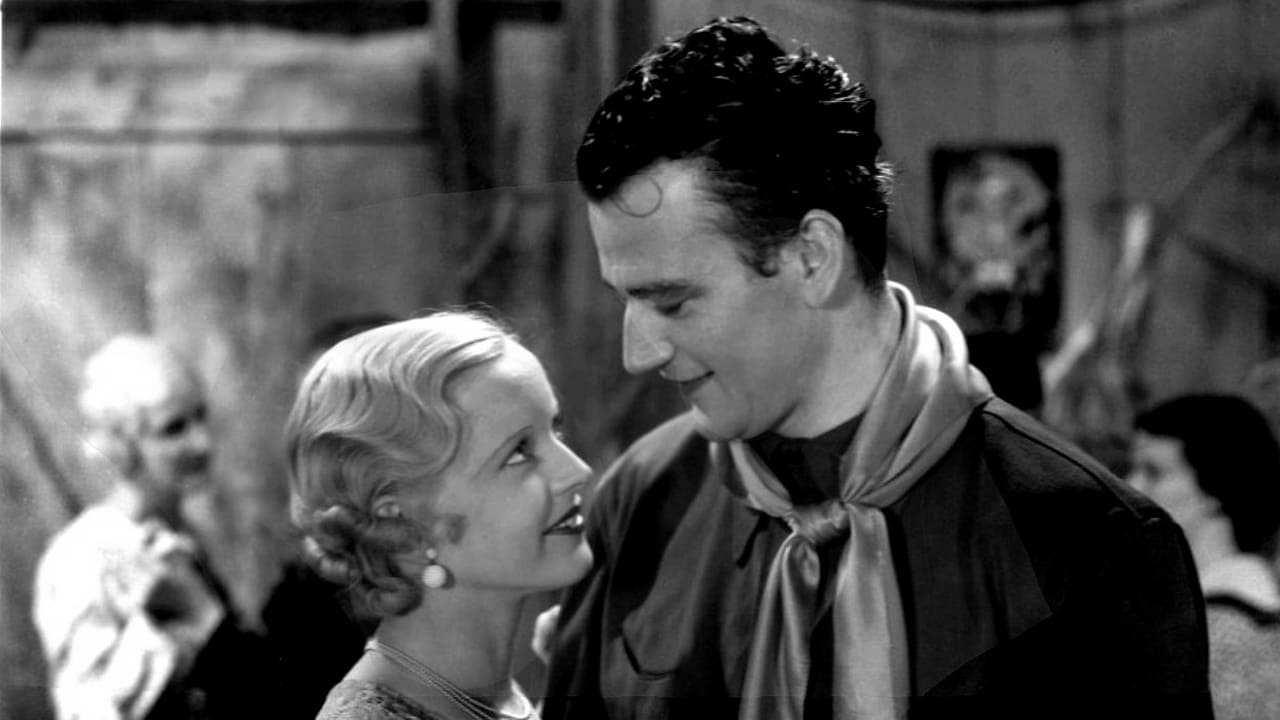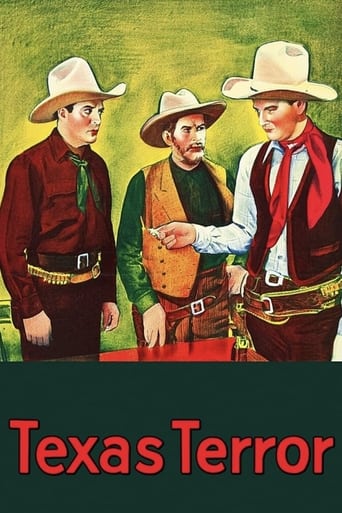

It's a good bad... and worth a popcorn matinée. While it's easy to lament what could have been...
... View MoreIt's the kind of movie you'll want to see a second time with someone who hasn't seen it yet, to remember what it was like to watch it for the first time.
... View MoreVery good movie overall, highly recommended. Most of the negative reviews don't have any merit and are all pollitically based. Give this movie a chance at least, and it might give you a different perspective.
... View MoreGreat movie. Not sure what people expected but I found it highly entertaining.
... View MoreJohn Wayne is the local sheriff and in his attempt to stop some would be robbers, he believes that he has killed his best friend,, he is very distraught and winds up quitting his job, and becoming a hired ranch hand in the desert, in the meantime , he helps some Indians with their day to life and problems,, George "Gabby Hayes,, plays the old sheriff , who now has to take the job of sheriff since Wayne quit.. Leroy Mason plays the villain as usual, and does a pretty good job with it. as the film moves on , one of the people he is helping a young girl, who he knows very well is the daughter of his friend,, the man who he believes he has killed, will she find out that he had something to do with it,, in the meantime he has to stop some horse thieves, and eventually it will all lead back to who shot his best friend,, and interesting watch,, not a great western,, but not a bad one either,, middle of the road , maybe a little better.
... View MoreNo need to spend much time deconstructing "Texas Terror." This was the depths of the Great Depression and John Wayne was lucky to find any work at all, even at Monogram. These things were turned out with blinding speed. I think there may have been a two-year period in which Wayne starred in eight of these poverty-row features.He isn't really "John Wayne" yet. He's tall, handsome, slender, slow, and graceful but doesn't project the indomitable and bulky masculinity of his later years. And he hasn't yet learned to reserve his strength. He throws his lines out as if proud to have memorized them.The girl in the picture seems to have less talent than Wayne. The smoothest performance is from George Hayes who hadn't become the caricature of "Gabby". He seems like the only seasoned performer in the cast.He's not, though. Yakima Canutt and gang did the stunts and they were very good riders. And the photographers included Archie Stout who was to win an Oscar for Wayne's "The Quiet Man" in 1952.The writers didn't need to spend much time on the script because the few words we hear are strictly functional, uttered only in order to advance the plot. Audio title cards."Seen anything of young Higgins lately?""Waal, he was in town to cash a few nuggets last week. Ridin' around with a heavy heart. Turned into a desert rat, you know."The story is perfunctory. Wayne blames himself for the death of an old friend during a hold up and, in part to redeem himself, helps his friend's newly arrived daughter to get the ranch up on its feet, ensnare the villains, and marries her. The stagecoach is a Model T Ford. There's a modern telephone. Lucille Brown wears 1935 clothes. But what do you expect?
... View MoreNo need to repeat the plot. This matinée special has a number of interesting features. Reviewer jayraskin1 is right—this is one of the young Wayne's better performances since he has to run a gamut of emotions from shame to anger. He's actually a better actor than these two-reelers required, and I wouldn't be surprised this was a feature where the great John Ford caught Wayne's potential before elevating him to the A-class in Stagecoach (1939). Then too, I enjoyed the old flivver chugging down the road. Sure, there are some questionable anachronisms like the antique telephone. But it's fun and revealing to see these early editions of everyday modern contraptions. Also, the milking contest is a charming hoot, expertly done by the two characters playing the yokels. I wish I could say the same for the leading lady who at one point declaims like she's center stage doing Shakespeare. But wonder of wonders, catch an apparently well-groomed George (Gabby) Hayes in several scenes where, dare I say it, he looks almost handsome! I'm still wondering about that and whether I should have any more 12-packs while enjoying these oaters. Speaking of visual oddities, is that about ten seconds of a subjective camera in the movie's first part when the scene goes all blurry as though we're peering through the blurry eyes of the leading lady (I believe it was hers and not mine!). If so, it's one of the few subjective shots in a genre not known for arty effects, to say the least. Anyway, I'm glad Lone Star popped enough money to put the larger than usual cast including extras into the piney mountains east of LA. The locale may not be the scenic Sierras, but it sure beats the scrubby hills of city outskirts. All in all, it's a better-than- average entry for fans of the Lone Star- Wayne series.
... View MoreAlmost all of the 'Lone Star' westerns have some unique elements that make them worth watching, if not just to see the early John Wayne. As one of the later films in the series, with its large cast, leisurely pace, and more developed scenes with lead and supporting players, it seems more like a western of the forties (of course, without the music sound track), with major portions of it given over to John Wayne's love interest, Lucille Brown, as Beth Matthews.In many of the previous ones the female had little to do, or was reduced to a cypher, and usually, as if by magic, kissed him or ran off with him at the end, hardly ever appearing much in the film or playing off him in very many key scenes.Here the emphasis is quite different.From her first scene facing the camera in a long medium shot and boldly proclaiming herself, she is given a lot of dialog and many scenes with John Wayne, who plays John Higgins, the 'falsely accused' killer of her father (this fact unknown to her until revealed by the villain, Leroy Mason as 'Dixon.') These scenes range from adulation and love, surprise and sadness, to vile contempt and tears -- when she condemns him as a robber, thief, liar and murderer -- and then back to "love in a cabin." No riding off into the sunset here! The movie gives more screen time to the heroine than to the villain! Here the villain, Dixon, is weak and doesn't appear very much. Well, you can't always have both (except in great films, of course!).Unfortunately, the film drags along after Dixon hatches the plot to steal all of Beth's horses. There's no tension or excitement that builds from this point on, even when Higgins captures Dixon, in a rather weak fight. Just a dull, working through of the plot. The first half had the excitement, with Higgins chasing and being pursued by Dixon's 'posse', who rob the 'Stage' (an old Tin Lizzie!).So, finally, I have to give it a four, even though I enjoyed the fact that as a love story, this was one 'Lone Star' that was more fully developed! Side note: We also get to see and hear George Hayes use his 'normal' voice and facial expressions as Sheriff (except for short inter cut scenes with 'Blacksmith Bob')!
... View More